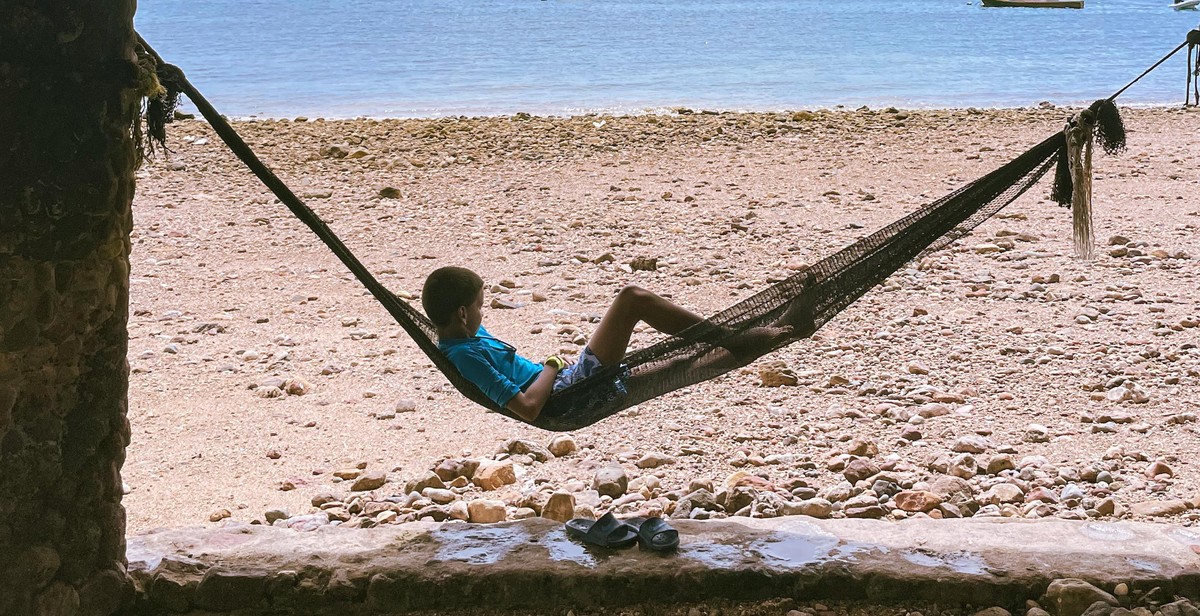How to Tie Hammock Suspension Knots: Essential Knots for Safe and Secure Hanging
Hammocks are a wonderful way to relax and enjoy the outdoors. However, it is important to ensure that your hammock is hung safely and securely. This is where hammock suspension knots come in. As a professional article writer and content creator, I have spent countless hours researching and experimenting with different knot techniques for hanging hammocks.
My Experience with Hammock Suspension Knots
During my first few attempts at hanging a hammock, I made the mistake of using the wrong knots and ended up with a very unstable and uncomfortable setup. It was then that I realized the importance of using proper hammock suspension knots. Since then, I have spent a lot of time learning about different knots and their uses, and have even created my own preferred techniques based on personal experience.
In this article, I will share my knowledge and experience on the essential hammock suspension knots that you need to know in order to hang your hammock safely and securely. Whether you are a beginner or an experienced hammock user, this guide will provide you with the necessary information to ensure that your hammock setup is comfortable, stable, and safe.
So, let’s get started!

Why is it Important to Know How to Tie Hammock Suspension Knots?
When it comes to hanging a hammock, proper suspension is essential for a safe and secure experience. Knowing how to tie hammock suspension knots is crucial to achieving this. Here are some reasons why:
1. Safety
A well-tied hammock suspension knot ensures that the hammock is securely attached to its anchor points. This is crucial to prevent the hammock from falling or collapsing while in use. A poorly tied knot could cause serious injury to the user, so it’s important to know the right knots to use.
2. Comfort
Properly tying hammock suspension knots can also contribute to the user’s comfort. When the hammock is hung at the correct height and angle, it will provide a comfortable and relaxing experience. On the other hand, an improperly hung hammock could cause discomfort or even pain for the user.
3. Durability
If you plan on using your hammock frequently, durability is important. By using the right knots, you can ensure that your hammock suspension system will hold up over time. A well-tied knot will distribute weight evenly and prevent unnecessary wear and tear on the hammock and its suspension system.
4. Versatility
Knowing how to tie different hammock suspension knots gives you more options when it comes to hanging your hammock. Depending on the anchor points available, certain knots may be more suitable than others. By knowing a variety of knots, you can adapt to different situations and ensure that your hammock is always hung safely and securely.
5. Aesthetics
Finally, tying hammock suspension knots can also contribute to the overall aesthetics of your hammock setup. A well-tied knot looks neat and tidy, while a messy or haphazard knot can detract from the overall appearance. By taking the time to learn and practice proper knot-tying techniques, you can create a beautiful and functional hammock setup.
Overall, knowing how to tie hammock suspension knots is important for safety, comfort, durability, versatility, and aesthetics. Whether you’re a seasoned hammock user or just getting started, taking the time to learn the right knots will ensure a safe and enjoyable experience.

Types of Hammock Suspension Knots
When it comes to hanging a hammock, choosing the right suspension knots is essential for both safety and comfort. Here are three commonly used hammock suspension knots:
The Larkshead Knot
The Larkshead Knot is one of the most popular knots for attaching a hammock to a suspension system. It is a simple and reliable knot that can be tied quickly. To tie the Larkshead Knot, follow these steps:
- Take the end of your hammock and fold it over the suspension line.
- Pass the folded end of the hammock through the loop created by the fold.
- Pull the knot tight.
The Larkshead Knot is easy to adjust and untie, making it a great choice for hammock camping.
The Marlin Spike Hitch
The Marlin Spike Hitch is a versatile knot that can be used to attach a hammock to a tree or other anchor point. It is a secure knot that is easy to tie and adjust. Here’s how to tie the Marlin Spike Hitch:
- Wrap the hammock around the anchor point.
- Pass the working end of the hammock through the loop created by the standing end.
- Pass the working end of the hammock through the loop again, this time creating a bight.
- Insert a marlin spike or other tool into the bight and twist to tighten the knot.
The Marlin Spike Hitch is a great choice for hammock camping because it is easy to adjust and untie, even after it has been under load.
The Becket Hitch
The Becket Hitch is a secure and easy-to-tie knot that is commonly used in boating and sailing. It is also a great choice for hanging a hammock. Here’s how to tie the Becket Hitch:
- Take the end of the hammock and pass it around the anchor point.
- Pass the end of the hammock through the loop created by the standing end.
- Pass the end of the hammock around the standing end and through the loop again.
- Pull the knot tight.
The Becket Hitch is a secure knot that is easy to adjust and untie. It is a great choice for hammock camping because it can be tied quickly and is very reliable.

Step-by-Step Guide on How to Tie Hammock Suspension Knots
The Larkshead Knot
The Larkshead Knot is a simple and secure way to attach your hammock to a tree strap or rope. Follow these steps:
- Loop the tree strap or rope through the hammock ring.
- Fold the loop in half and pass it over the tree trunk or anchor point.
- Bring the two ends of the loop through the folded loop and tighten.
The Larkshead Knot is easy to adjust and untie, making it a popular choice for hammock suspension.
The Marlin Spike Hitch
The Marlin Spike Hitch is a versatile knot that can be used to adjust the height of your hammock. Here’s how to tie it:
- Loop the tree strap or rope through the hammock ring.
- Take the working end of the strap or rope and pass it over the standing end.
- Insert the working end through the loop created by the first step.
- Pass the working end over the standing end again and insert it through the same loop.
- Use a marlin spike or other tool to tighten the knot.
The Marlin Spike Hitch is a secure knot that won’t slip or loosen with use.
The Becket Hitch
The Becket Hitch is a strong and reliable knot that is commonly used in sailing and rigging. Here’s how to tie it for your hammock:
- Loop the tree strap or rope through the hammock ring.
- Take the working end of the strap or rope and pass it over the standing end.
- Wrap the working end around the standing end and insert it through the loop created by the first step.
- Pass the working end over the standing end again and insert it through the same loop.
- Tighten the knot by pulling on the standing end.
The Becket Hitch is a secure knot that can handle heavy loads and won’t slip or loosen over time.
| Knot | Pros | Cons |
|---|---|---|
| Larkshead Knot | Easy to adjust and untie | May slip with heavy use |
| Marlin Spike Hitch | Secure and adjustable | Requires a tool to tighten |
| Becket Hitch | Strong and reliable | More complex to tie |

Safety Precautions When Hanging Your Hammock
While hammocks are a great way to relax and enjoy the outdoors, it’s important to take proper safety precautions when hanging them. Here are some essential tips to keep in mind:
Check for Strength and Durability
Before hanging your hammock, it’s important to ensure that the tree or structure you’re using is strong enough to support your weight. Check for any signs of rot or damage, and avoid using trees with branches that could potentially break. Additionally, make sure that your hammock is made from durable materials and can support your weight.
Hang at the Right Height
When hanging your hammock, it’s important to hang it at the right height. A hammock that is too high off the ground can be dangerous, while one that is too low can be uncomfortable. A good rule of thumb is to hang your hammock with the bottom about 18 inches off the ground. This will provide a comfortable height for getting in and out of the hammock, while still keeping you safe from potential falls.
Use Tree Straps or Hammock Suspension Systems
When hanging your hammock, it’s important to use tree straps or a hammock suspension system. These systems help distribute your weight evenly across the tree or structure, reducing the risk of damage or collapse. Additionally, they help protect the tree from damage caused by the hammock ropes or straps. Avoid using nails or screws to hang your hammock, as these can damage trees and structures.
By following these safety precautions, you can ensure that your hammock is hung safely and securely, allowing you to relax and enjoy the outdoors with peace of mind.
Conclusion
Mastering the art of tying hammock suspension knots is crucial for a safe and secure hanging experience. The knots mentioned in this article are essential for both beginners and experienced hammock users.
Before you head out for your next camping or hiking trip, make sure to practice tying these knots at home to ensure you have a comfortable and secure setup when you arrive at your destination.
Remember to always inspect your knots and suspension system before use, and to follow the weight limit recommendations of your hammock and suspension system.
With practice and experience, you’ll find that tying hammock suspension knots becomes second nature. Before you know it, you’ll be able to set up your hammock with ease and confidence, knowing that you’ve taken the necessary steps to ensure your safety and comfort.
So, go ahead and give these essential knots a try. You won’t regret it!
Further Reading
| Knot | Uses |
|---|---|
| Marlin Spike Hitch | Attaching hammock to tree straps |
| Lark’s Head Knot | Attaching hammock to carabiner or S-hook |
| Slipped Buntline | Adjusting hammock tension |
| Becket Hitch | Attaching hammock to carabiner or S-hook |
| Double Fisherman’s Knot | Joining hammock suspension lines |
